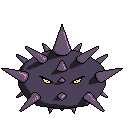What is Functional Programming
I have been promoting and migrating from Object-Oriented Programming to Functional Programming for many years, and I loved it.
But just like everything, the more you dig into it, the more you realize what you do not know.
Recently I have been working on just-func.
I want to design it to be a homoiconic, functional programming language.
But when I put my finger to it, I start wondering what exactly is functional programming.
When people talk about functional programming, they often talk about languages such as Lisp, Haskell, F#, Clojure, etc.
But can you do functional programming in other languages?
Of course! You can do it in JavaScript/TypeScript, and you can do it in C#, Java, and even C++.
They also talk about pure function, immutability, recursion, monoid, monad, functor, etc.
So do these things define functional programming?
In order to design just-func correctly,
I send myself on a small research journey.
Functional Programming is a Paradigm
Functional Programming (FP) is a paradigm, just like Object-Oriented Programming (OOP) is a paradigm.
What is paradigm?
Paradigm is a cognitive framework containing basic assumptions, ways of thinking, and methodology.
In this context, it means that it is a specific approach to programming.
FP has its root in lambda calculus, which is a subset of category theory.
Therefore, to understand FP, we should first understand category theory.
There is a lot to learn about FP from category theory. But in this blog, we only need to answer the very first question: what is a category?
Bartosz Milewski’s excellent book Category Theory for Programmers has the perfect description:
A category consists of objects and arrows that go between them.
From this definition, a category has two things: objects and arrows.
What is an object? The definition didn’t specify. It is intentional thou. For now, let’s keep it that way.
What is an arrow? The definition also didn’t specify. But it does give a bit more information about it: arrows that go between them.
Arrow is directional, and “go between them” means the arrow starts from one object and ends with one object.
The start object and the end object can be the same object, or they can be different.
Also, they are in plural form: objects and arrows. In mathematics, that means they are a set: a set of objects and a set of arrows.
So putting these back together, the definition becomes:
A category is about a set of objects
ato a set of objectsb, and a set of transformationsfthat transformsatob.
i.e.: f(a) ⇾ b
It is a function!
Note that f, a, and b all have their significance.
This means when talking about a specific category,
we need to specify f, a, and b.
From here, we can derive the two basic requirements of FP:
- Since we are talking about mathematics, this function
f(a) ⇾ bis a formula.
That means every time you call it with a specifica', it will always returnb'.
In other words, the function must be pure. aandbare just set of objects, this means they can be anything:
values (such as strings and numbers), set of values (such as arrays, lists, vectors, objects),
functions (higher-order functions), or set of functions (generics)
Any other characteristics of FP are just derivatives of these two requirements. Let list a few here:
- Immutable data: this is needed for the function to be pure
- First-class function: this preferred (but not required) so that we can use function can be value,
i.e., we can use function asa(callback), orb(higher-order function). - Closure: this is beneficial (but not required) as it allows functions to capture additional contexts
- Declarative programming: this is the result of no needed to mutate data.
- Recursion instead of looping: this is the result of not able to mutate data
Notice that I italicize requirements in “We can derive the two basic requirements of FP”, and I also mentioned that first-class function is preferred but not required.
It is because we can always wrap a function in an object and pass it along. It is very clumsy but is doable. That is how you write functional code in OOP languages such as Java and C#.
Therefore, the ONLY requirement of FP is pure function.
That means you can write functional programming code any programming language.
Of course, just that requirement is not that useful. But it gives you a critical insight:
As long as you can find ways to keep your function pure, you can get the benefits of functional programming.
Obviously, there are still a lot more to talk about. I will cover them in the subsequence posts.
Until then, Happy coding!
